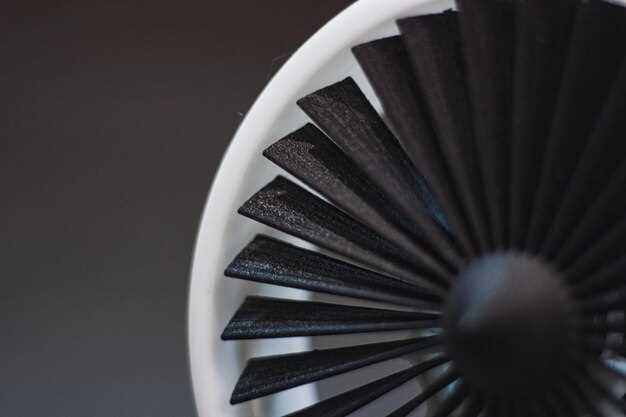
In the realm of electronics, the significance of efficient thermal management cannot be overstated. A cooling fan plays a vital role in maintaining optimal operating temperatures for various electronic devices. When electronic components generate heat during their operation, a functional cooling system becomes essential to prevent overheating, which can lead to reduced performance, premature failure, or even irreversible damage.
The operational efficiency of a fan directly impacts the overall reliability and longevity of electronic equipment. By facilitating the continuous flow of air, a cooling fan dissipates accumulated heat, ensuring that vital components such as CPUs, GPUs, and power supplies operate within their designed temperature ranges. Without proper cooling solutions, these critical components can suffer from thermal throttling, resulting in sluggish performance and increased energy consumption.
Furthermore, the importance of a reliable cooling fan extends beyond just performance. Keeping temperatures in check not only enhances device functionality but also contributes to user safety. Excessive heat can present a fire hazard and compromise the safety of both the product and its users. Thus, understanding the necessity of a functional cooling fan in electronic devices is crucial for both manufacturers and consumers alike.
How Cooling Fans Prevent Overheating in Circuit Boards

The performance and longevity of electronic devices heavily depend on effective thermal management. Overheating can lead to significant damage to sensitive components on circuit boards, resulting in failure or reduced efficiency. Cooling fans serve as vital components in maintaining optimal operating temperatures.
Cooling fans work by introducing a continuous flow of air over and around circuit boards, effectively dissipating heat generated by electrical components. This cooling mechanism is similar to an engine, where the fan helps regulate temperature and prevents overheating. Without proper air circulation, heat can accumulate, leading to thermal hotspots that threaten the integrity of the circuitry.
When an electronic device is in operation, various components such as CPUs, GPUs, and power regulators generate heat. A functional cooling fan draws in cooler ambient air, which helps absorb and carry away this excess heat. By promoting airflow, the fan ensures that hot air is expelled and replaced with cooler air, creating a balanced temperature environment.
Furthermore, maintaining a stable temperature through effective cooling reduces the risk of thermal expansion and contraction, which can cause physical damage to circuit board materials and connections. This process not only enhances the reliability of electronic devices but also extends their operational lifespan.
In summary, the role of cooling fans in preventing overheating in circuit boards cannot be overstated. Their ability to maintain airflow and regulate temperature is essential for the safe and efficient operation of electronics. Investing in a reliable cooling fan system is crucial for any application where heat management is a concern.
Choosing the Right Cooling Fan for Engine Temperature Management
Selecting the appropriate cooling fan is crucial for effective engine temperature management. An efficient fan ensures that the engine operates within its optimal temperature range, preventing overheating and enhancing performance. To make an informed decision, consider factors such as airflow capacity, noise levels, and energy efficiency.
Airflow capacity, measured in cubic feet per minute (CFM), directly influences the fan’s ability to dissipate heat. Higher airflow ratings typically correlate with better cooling performance. It’s essential to match the fan’s airflow with the engine’s heat output to maintain adequate cooling under various operating conditions.
Noise levels are another critical aspect. An excessively loud fan can be disruptive, particularly in applications where sound control is paramount. Opting for a fan designed with noise reduction features may enhance overall user experience while still providing necessary cooling capabilities.
Energy efficiency should also be a consideration, especially in applications where power consumption is a concern. Look for fans with energy-efficient designs that can provide adequate cooling without drawing excessive power, thus contributing to overall energy management in the system.
In summary, when choosing a cooling fan for engine temperature management, prioritize airflow capacity, noise levels, and energy efficiency to ensure optimal cooling performance and enhance the longevity and reliability of the engine.
Maintenance Tips for Maximizing Cooling Fan Performance

To ensure optimal performance of your cooling fan, regular maintenance is essential. Dust and debris can accumulate over time, obstructing airflow and diminishing efficiency. Clean the fan blades and housing regularly using a soft brush or a vacuum with a brush attachment to eliminate buildup.
Check the fan bearings for signs of wear or damage. A well-functioning engine of a cooling fan relies on smooth operation. If you notice unusual noises or vibrations, consider lubricating the bearings or replacing the fan if necessary.
Ensure that the fan is mounted securely. Loose installations can lead to additional noise and reduced cooling capability. Tighten screws and brackets as needed to maintain stability during operation.
Monitor the environment in which the cooling fan operates. High ambient temperatures can strain the fan and reduce its lifespan. Try to position the fan in a cooler area or improve ventilation around electronic devices to enhance cooling efficiency.
Finally, consider using a fan speed controller or temperature sensor to optimize fan performance dynamically based on real-time cooling needs. This can help in maintaining the longevity of the engine while providing efficient cooling, adapting to the demands of your electronics. Regularly evaluate these systems to ensure proper functionality.
